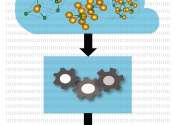Designing a cost-effective X-ray free electron lasers facility
Many advances in structural science since the 1970s were made by probing materials with synchrotron radiation: that is, high energy X-rays generated through accelerating high-energy electrons. The latest generation of such ...









